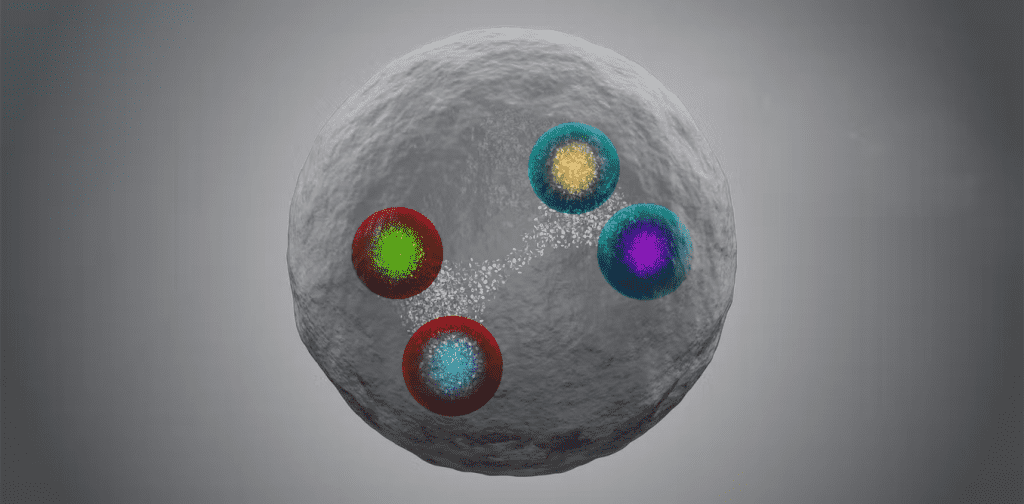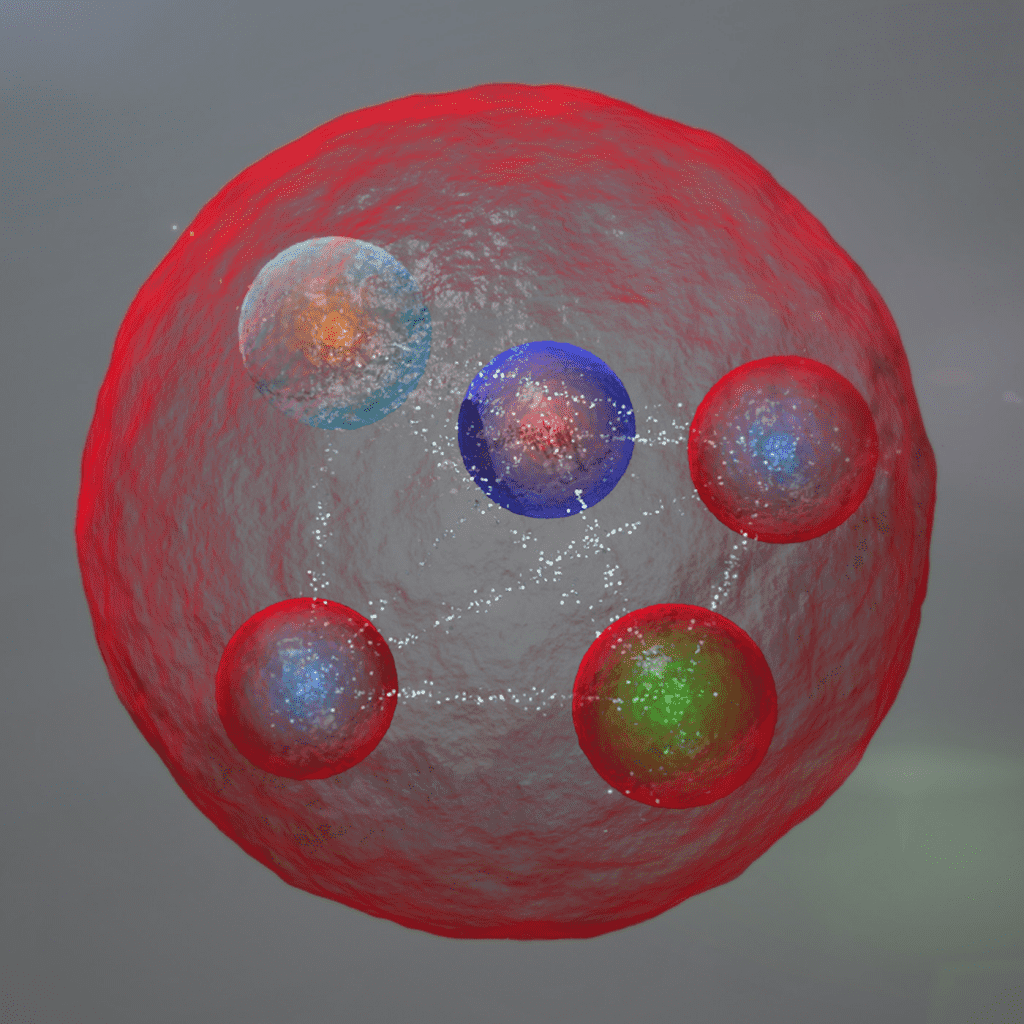CERN started using the Large Hadron Collider for the first time in three years and the scientists there announced that they had observed three new “exotic” particles.
Their findings, presented today at a CERN seminar are a new type of “pentaquark” and the first-ever pair of “tetraquarks,” with one of the pair being a new type of tetraquark entirely.

“The more analyses we perform, the more kinds of exotic hadrons we find,” said Large Hadron Collider beauty (LHCb) physics coordinator Niels Tuning in a CERN press release. “We’re witnessing a period of discovery similar to the 1950s, when a ‘particle zoo’ of hadrons started being discovered and ultimately led to the quark model of conventional hadrons in the 1960s. We’re creating ‘particle zoo 2.0’.”
Quarks are subatomic “elementary particles,” believed to be the fundamental building blocks of matter.
“Exotic” quarks, similar to the ones being observed, are composed of a charm quark and a charm antiquark. The remaining quarks are either up, down, or strange quarks/antiquarks.
This newly observed pentaquark, however, is made up of a charm quark, charm antiquark, an up and down quark, and a strange quark. This is the first time a strange quark that has been found in a pentaquark, according to CERN. As for the tetraquark, it’s unique not only because it’s the first to be found in a pair, but also that it’s doubly electrically charged.

The LHC was used in the groundbreaking 2012 discovery of the so-called “God Particle,” or the Higgs boson, a particle whose existence had hitherto only been predicted by the Standard Model of physics. The discovery earned François Englert and the eponymous Peter Higgs the Nobel Prize in Physics for predicting its existence back in 1964.
Now, scientists collaborating in the LHCb experiment continue to add to the Large Hadron Collider’s long list of commendable achievements.


